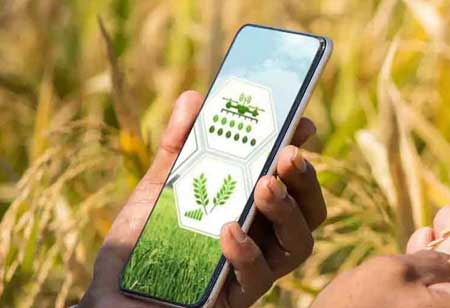Thank you for Subscribing to Agri Business Review Weekly Brief
Importance Of Vertical Farming.
Vertical gardening is all about planting greens, herbs, fruit, and the like on a vertical surface instead of spreading out horizontally.

By
Agri Business Review | Monday, November 28, 2022
Stay ahead of the industry with exclusive feature stories on the top companies, expert insights and the latest news delivered straight to your inbox. Subscribe today.
Stacked layers in vertical farming enable farmers and even at-home gardeners to cultivate more food on the same land.
Fremont, CA: Vertical gardening is all about planting greens, herbs, fruit, and the like on a vertical surface instead of spreading out horizontally. As everything is oriented vertically, this farming tactic is usually better fitting for urban areas and homes or businesses that don't have a large, flat plot of land. Nevertheless, it can be done on large-scale farms (typically indoors) and in your home, supplied with the required equipment.
Stacked layers in vertical farming enable farmers and even at-home gardeners to cultivate more food on the same land. Since decades of traditional farming have substantially damaged the soil in some locations, farmers and others are incorporating these vertical layers into buildings (along with skyscrapers, warehouses, and even shipping containers) and other spaces that would be otherwise unsuitable for farming.
Vertical farming can work in many ways, but one of the easiest forms involves crops grown inside stacked plant cups or trays in tower-like structures. The towers are equipped with hydroponic systems engineered to produce a flawless micro-climate, which manages everything, along with temperature, light exposure, and moisture level.
Often, crops are grown soil-less, within a continually circulating nutrient-rich water instead. This is usually why vertical farming systems grow various crops year-round.
Is Vertical Farming Sustainable?
One of the greatest selling points of vertical farming is that it is substantially more sustainable than conventional farming methods. Primarily, vertical farming needs less water and space than its more customary counterparts.
It's estimated that farmers can employ 98% less water and 99% less land with vertical farming methods. They can also produce crop yields 240 times that of conventional farms as (indoor) vertical farming enables a year-round, rolling harvest. And if you choose to grow some of your fruits and vegetables at home rather than venturing to the store to purchase them, you're reducing your carbon footprint.
As indoor vertical farming isn't reliant on weather or climate like traditional farming, it allows for increased production and consistent product all year round. This implies there's no more required to worry about when certain crops will be in season.
Vertical farms and gardens have more excellent sun/light and oxygen exposure than horizontal arrangements. In addition, since height is a factor when discussing verticality, these gardens are typically better protected from pests like caterpillars, slugs and beetles. This is especially true if you choose to place your garden inside.





